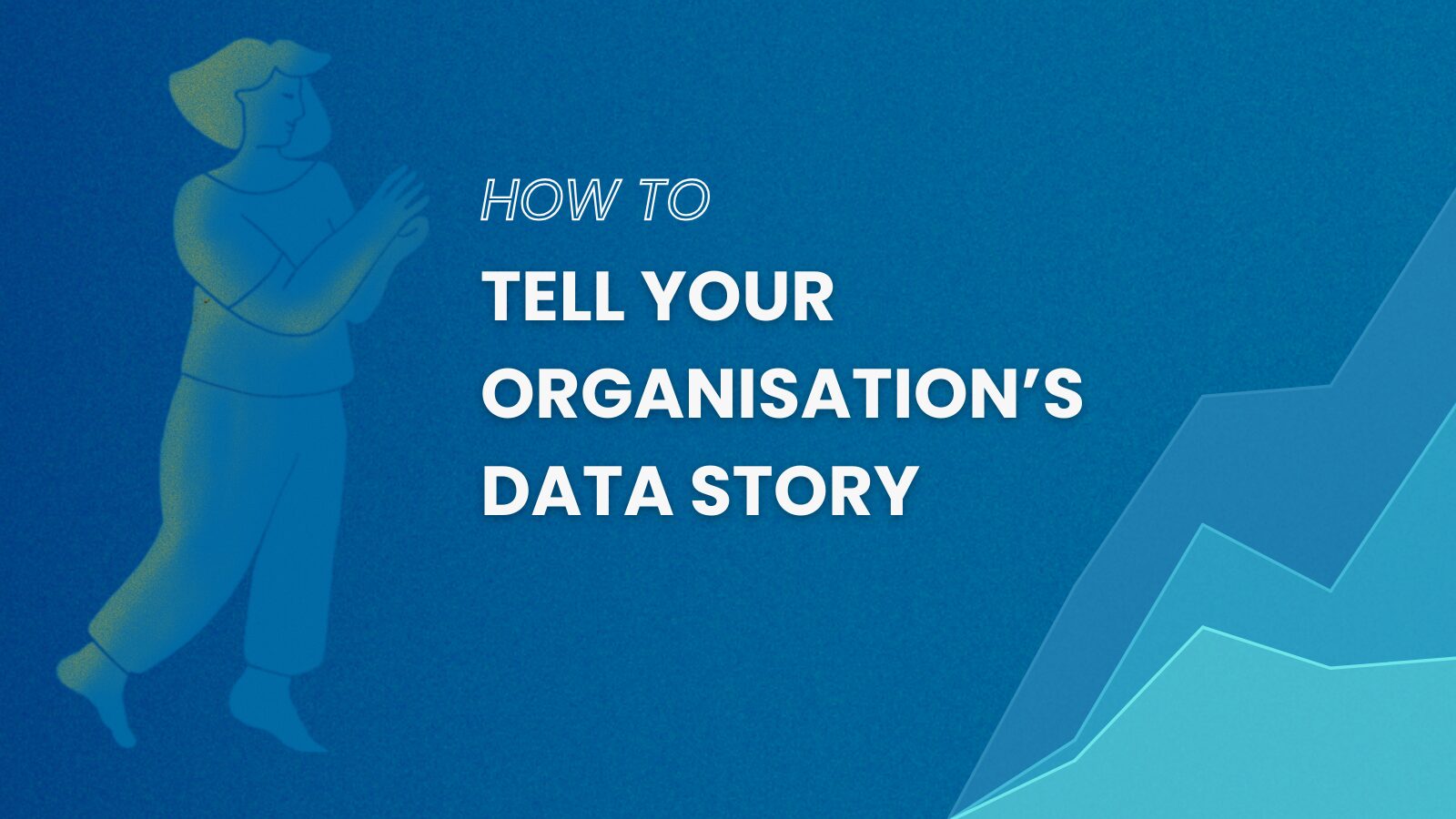We regularly hear from organisations that say “We do so much but share so little.” Behind this sentiment lie challenges ranging from limited capacity, scarce resources, and the uncertainty of knowing where to begin.
Data storytelling, a potent tool for change, is an important part of the work that civil society organisations do. It helps organisations advocate for their beneficiaries, secure funds for additional projects, and measure the impact made on the community.
We recognise that many other organisations are going through similar challenges so we’ve developed guidance to ensure that the impactful work you do is not just done, but also shared and celebrated.
Start small and iterate
There is rarely enough time in the day to get everything done, so it makes sense that talking about the work often takes a backseat to the work itself. For this reason, it’s important to start small and iterate through the process.
Instead of aiming for a data story that spans many years and activities, it’s best to focus on a singular dataset or even data point. Develop a clear story around this data point and test it with your team. The feedback received will help you iterate through the plan such that you’ll be able to refine your approach, tailor your narrative or even shift focus completely. Doing this will allow you to course correct earlier than if you take on a larger project.
Over time, this practice will become second nature and you’ll be able to build more complex stories quickly.
Work backwards
When it comes to storytelling, the practice of ‘working backwards’ is often invaluable. This approach entails starting with the end goal in mind. Similar to determining the destination before starting a trip, this practice ensures that the team is aligned in its objectives and a clear plan is followed throughout.
Working backwards helps you to:
- Practice data minimisation. Quite often we collect data just in case we need it, however, working backwards ensures that you only collect and store what you need to tell your story. (Learn more about data minimization here.)
- Surface challenges. As you explore the story you want to tell, you may realise that the data will be difficult to capture or may put your beneficiaries in danger if published.
- Highlight opportunities. In the case that the data you’ve already collected, or that you are busy collecting, does not meet the end goal, working backwards gives you a chance to explore the gap between what’s available and what’s needed.
Broadly, working backwards involves the following questions:
- What do we want our audience to learn or take away from our data story? For example, do we want our audience to understand the scale of the needs of the communities we support? Or maybe, the activities that most need funding, and why?
- Do we currently have the data to tell this story? If not, can and should we get this data? For example: Have there been historical attempts at telling this story and what do they look like?
- What voices have been excluded?
- Who stands to benefit from the data? Who might be harmed by data? How can we tell this story in a way that keeps our community safe?
- If we want to show change over time, do we have or can we collect the same data point over different time periods?
- If we want to show the difference between groups, do we have or can we safely collect information on the different groups?
Tell a story
We are often tempted (and encouraged) to share our facts and figures to tell the world what we’re doing. However, it’s stories that influence attitudes and behaviour. As Brent Dykes (author of Effective Data Storytelling) shares, data storytelling has been found to be more memorable and persuasive than statistics alone (63% v 5%).
While data visualisations such as charts, graphs and infographics can be helpful here, data alone doesn’t tell a story. It’s important to weave your data into a narrative that will be memorable to your intended audience – as done, for example, in The Marine Stewardship Council’s story on overfishing, or BuildOn’s report on the global education crisis.
When doing this, you can use popular storytelling frameworks such as The Hero’s Journey to structure your story, but always remember to keep it simple – complex stories are not particularly memorable. When reviewing your story, ask yourself:
- When looking at the data, do you see patterns or anomalies that support the key message?
- What additional context can you provide to help your audience interpret the numbers or understand their significance?
- In what order should the data and context be presented in order to support the story that you want to share?
- Will your audience be able to understand your story? Does it contain jargon or is it overloaded with statistics?
- And, most importantly, are you prioritising your audience? What do they already know? What do they need to know? And what do you want them to feel?
Don’t forget: Centre the community
It’s important to remember that data is not merely a neutral tool for telling stories but is deeply tied to existing power structures. As organisations strive to tell their stories through data, frameworks such as Responsible Data (RD) and Data Feminism offer useful perspectives.
These frameworks challenge us to consider who controls the data, who is represented or underrepresented, and how data can either reinforce or challenge systemic inequities. By using these frameworks, organisations can practise more equitable data storytelling, ensuring that the narratives shared are not just engaging but also a true and honest reflection of the world we live in.
Reach out
You don’t have to do this alone! If you would like tailored support thinking through your data storytelling journey, our team has been supporting social justice organisations in over 30 countries with their tech and data challenges, so do get in touch!

